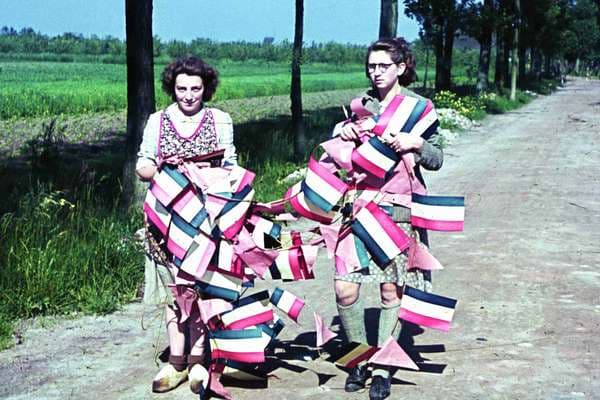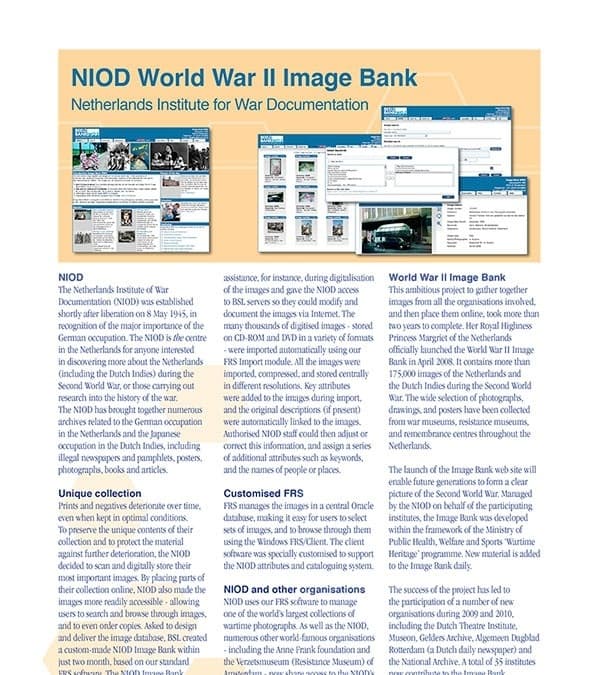
NIOD – World War II Photo Archive
NIOD, World War II Photo Archive
The Netherlands Institute of War Documentation (NIOD) was established shortly after liberation on 8 May 1945. The NIOD is the most important resource for anyone interested in discovering more about the Netherlands (including the Dutch Indies) during the Second World War, or carrying out research in this area. The NIOD brought together numerous archives related to the German occupation of the Netherlands, and the Japanese occupation in the Dutch Indies, including illegal newspapers and pamphlets, posters, photographs, books and articles.
Unique collection
Prints and negatives deteriorate over time. To preserve the unique contents of their collection, the NIOD decided to digitize their most important images. Impressed by our FRS asset management software, they asked BSL to create a custom web application, managing their own image collection, as well as collections from other institutes. We created their WW II Image Bank using FRS, with custom interfaces developed to help them manage their unique collection. This included multilingual descriptions and attributes, and a public web site showing selected images. Researchers, newspapers, web site visitors and others can search the image archive, and order copies of the images for private use, or for research and/or publication.

Photo: Alphons Hustinx/NIOD

Shared online WW II Image Bank
The success of the NIOD WW II Image Bank encouraged over 30 other institutes to participate in the creation of a joint database. As well as the NIOD, numerous other world-famous organizations – including the Anne Frank foundation and the Resistance Museum of Amsterdam – now share the Image Bank, maintaining and publishing their own collections as part of a new online (multilingual) resource: the World War II Image Bank. This vast wealth of material – including much previously unpublished material – was made available online when the web site was launched by HRH Princess Margriet of the Netherlands in 2008. The World War II Image Bank was developed within the framework of the Ministry of Public Health, Welfare and Sports ‘Wartime Heritage’ programme.


